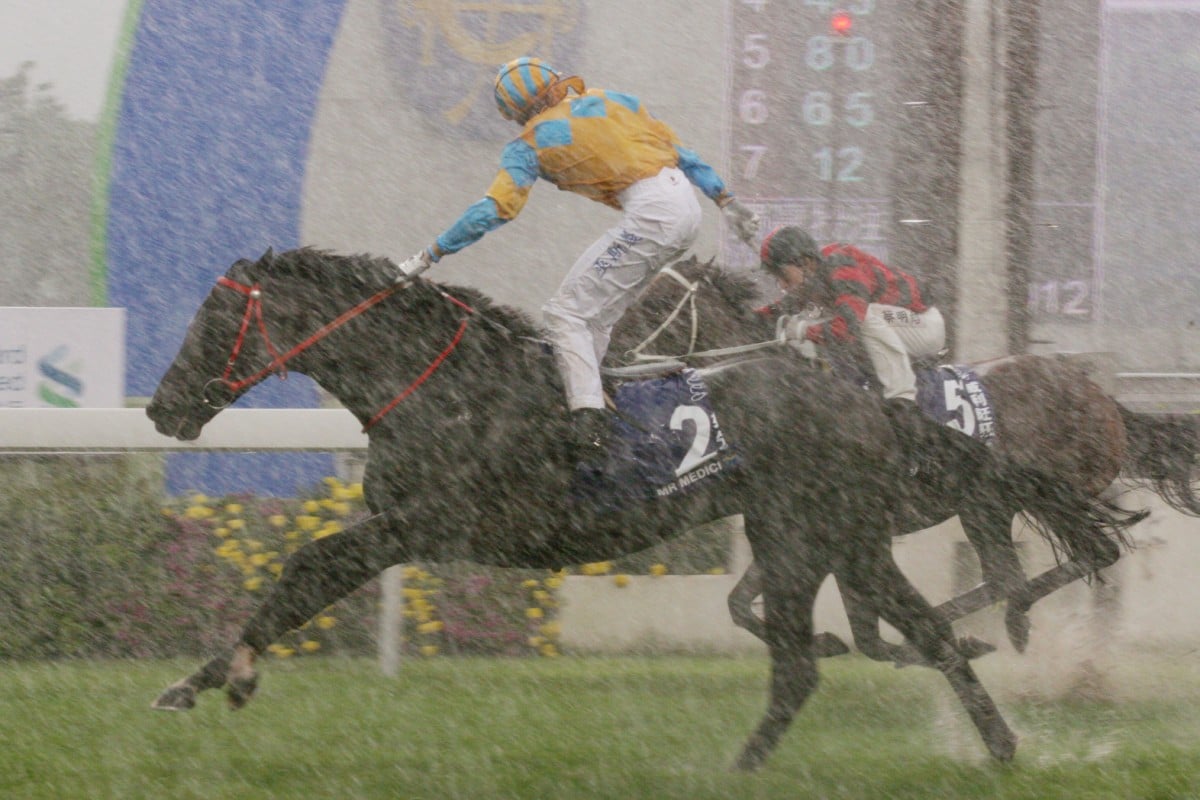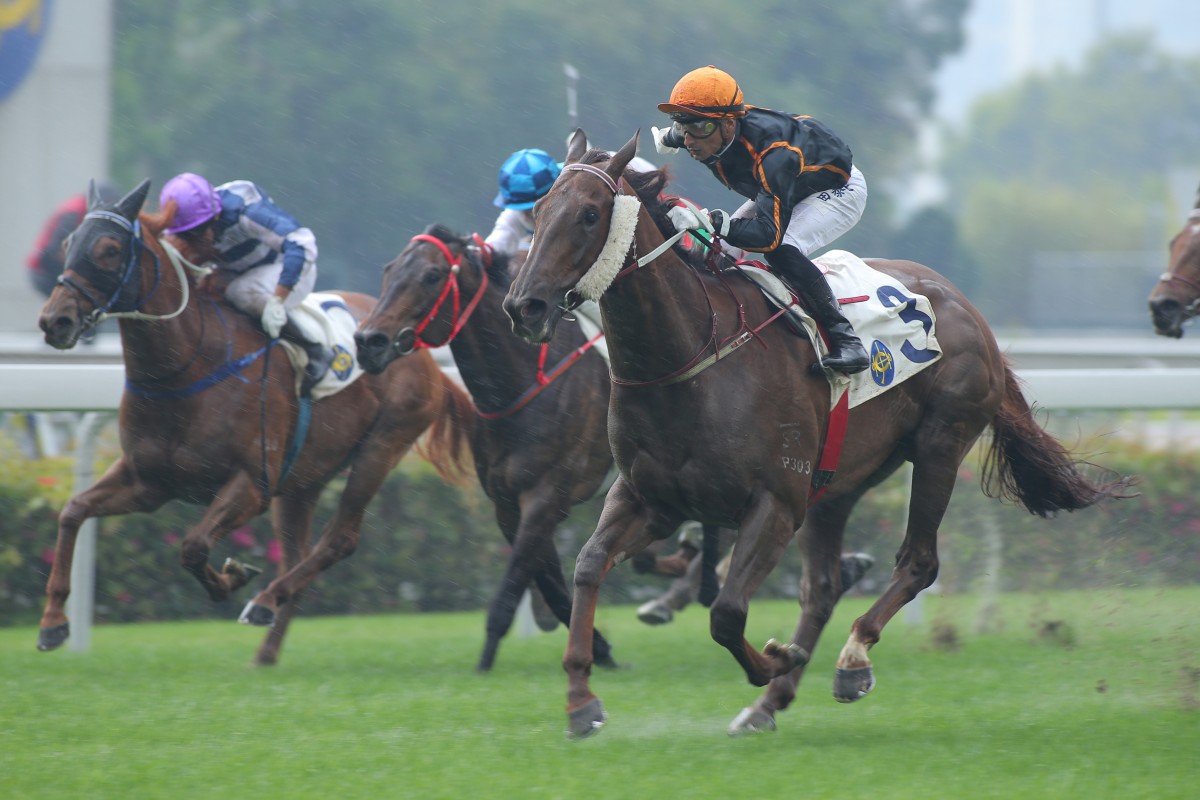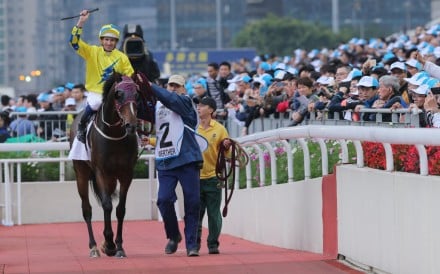A wet track in Hong Kong is like a taxi driver who speaks fluent English – once in a blue moon material.
It's easy to think rain would have some impact on the going, but in Asia, where the drainage is terrific and the sand-based tracks hold up week-in, week-out, a little shower hardly hurts the turf.
Hong Kong has had almost 650mm of rain in the three weeks since May 1 – at times, only Noah could be seen out on the streets. In the 36 hours leading up to Wednesday’s Happy Valley meeting, there was 100mm of rain. And yet, the meeting still started on a “good-to-yielding” track and was upgraded to “good” after the first race.
It was not the first time this month a storm of biblical proportions struck. The 36 hours leading up to the Sha Tin meeting on May 10 dumped 200mm of rain. And yet, the meeting was run on a good-to-yielding track – the equivalent of a dead (5) in Australia or somewhere between a good and a good-to-soft track in the UK.
This would be unfathomable in other parts of the world.
In Australia, 22mm of rain last Tuesday in Sydney means Randwick’s Saturday meeting is likely to be run on a slow track, despite sunny weather and not a drop of rain in the week and a half since.
In the United States, Baltimore had 40mm of rain in the 24 hours before the start of two big days of racing at Pimlico, culminating in the Preakness Stakes. While the turf track did get back to a good surface for the later stakes races on the grass, this was only after they switched earlier less-important turf races to the dirt to allow the track to dry.
If only it could be the same the world over as it is in Asia – not just in Hong Kong, but in Singapore, too.
Kranji received 25mm of rain about two hours before the start of the meeting on Sunday, with drizzle continuing for the first couple of races. This was on top of a 20mm storm on Friday.
In many other parts of the world, this would be enough to call the meeting off, but not in Singapore.
In fact, by the time the feature rolled around, the track was in perfect condition and Dan Excel was able to set a track record of 1:59.07 in the Singapore Airlines International Cup.
There were a number of contributing factors, obviously – a strong tempo set by Hong Kong Cup runner-up Tokei Halo for one. Still, to see Dan Excel hold a 2,000m record anywhere in the world – unfathomable before the race – means the surface had to be in A-grade condition.
Obviously, adverse weather can play a part in proceedings, even if not in affecting the going. And in Hong Kong, the big player is those pesky typhoons.
One meeting has been called off this season, but not due to the track. The meeting on September 22 was rescheduled as Typhoon Usagi approached Hong Kong, as a precaution due to concerns about people getting home safely if the Typhoon 8 signal was raised before the end of the card.
So while we have had almost 1,400mm of rain this season, from September to May, rain-affected tracks have been few and far between. Of the 579 races run on turf at both courses, 233 have been run on good-to-firm, 317 run on good and 29 have been run on good-to-yielding.
And while no races have been run on a yielding track, there were only 22 in the previous two seasons.
For a race to have been run on a soft track, you have to go all the way back to May 2010 when Mr Medici won the Champions & Chater Cup in the teeming rain. Two races were run on a soft track that day before the meeting was called off.
And to find a race on a heavy track, one must go all the way back to 2002.
The only way it seems to come up wet is if it starts raining during the middle of a meeting.
So now’s the time to chuck all that wet-weather form away – it means nothing.

















